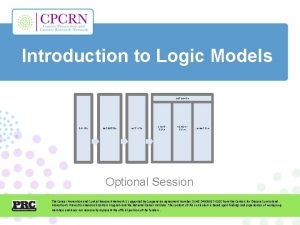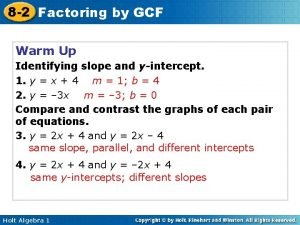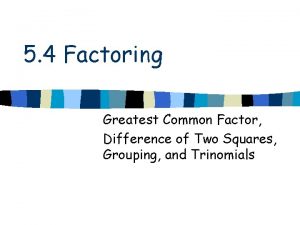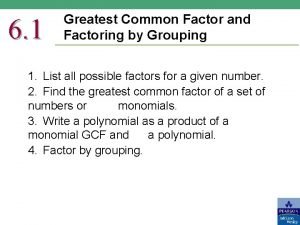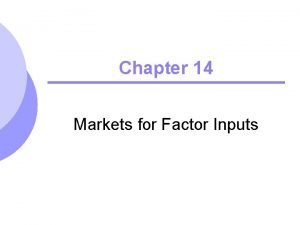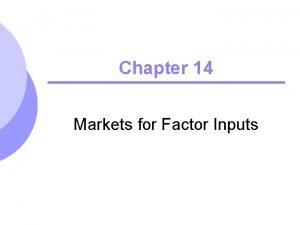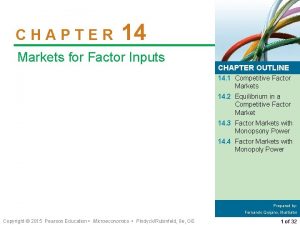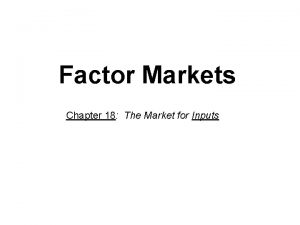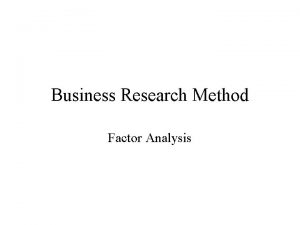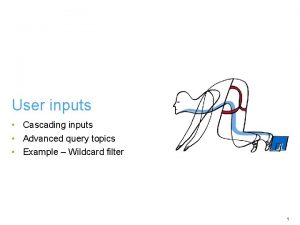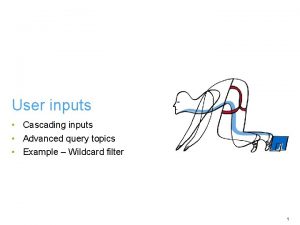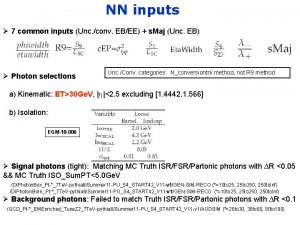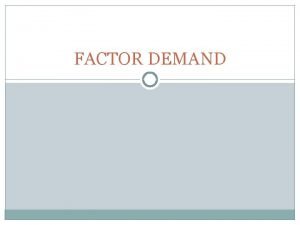Unit 14 Markets for factor inputs Outcomes Define

























- Slides: 25

Unit 14 Markets for factor inputs

Outcomes • Define and discuss competitive factor markets • Define and discuss factor markets with monopsony power • Define and discuss factor market with monopoly power 2

Competitive factor market • Definition: – A market with a large number of buyers and sellers – Of factors of production – Each is a price taker • Need to analyze the demand for a factor by individual firms. • Demand added = market demand 3

Demand for a factor input when only one is a variable • Short run! • FOP demand curve = Downward sloping • FOP demand = Derived demand – Demand for an input – That depends on and is derived from – Both the firm’s level of output, and – The cost of inputs 4

Demand for a factor input when only one is a variable • How to determine derived demand? – Firm produces only with 2 inputs: K and L – Hired at price r and wage w – L variable – Marginal revenue product of labour MRPL • Additional revenue from sale of output created by one additional unit of an input MRPL = (MR)(MPL) 5

Demand for a factor input when only one is a variable • Holds for all competitive factor markets • Examine MRPL: – Perfectly competitive output @ market price P – MR = P – Thus, MRPL = (MPL)(P) (Figure 14. 1) – But MRPL > w = hire more labour, if MRPL < w = lay off labour – MRPL = w : Profit maximizing amount of labour (Figure 14. 2) 6

Demand for a factor input when only one is a variable 7

Demand for a factor input when only one is a variable 8

Demand for a factor input when only one is a variable 9

Demand for a factor input when several inputs are variable • Firms choose simultaneously quantities of two or more variable inputs. – Hiring problem: Change in price for one will change demand for other. 10

The market demand curve • For each industry, the demand for labour must be calculated and added together. 11

Supply of inputs to a firm • Perfectly competitive = firm can purchase as much of input at a fixed market price 12

Supply of inputs to a firm • Average expenditure firm: – Supply curve representing the price per unit that a firm pays for a good • Marginal expenditure firm: – Curve describing the additional cost of purchasing one additional unit of a good ME = MRP ME = w 13

Market supply of inputs • Market Supply curve for factor input usually upward sloping • When the input is labour = backward bending supply of labour 14

Market supply of inputs 15

Equilibrium in a competitive factor market 16

Equilibrium in a competitive factor market 17

Equilibrium in a competitive factor market 18

Factor markets with monopsony power • Focus on a pure monopsony: One buyer • Buyer power such as Toyota and GM • Bargaining power: – Negotiate lower prices due to quantities bought. – Power determined buy number of buyers and purchase itself 19

Monopsony power: Marginal and average expenditure 20

Purchasing decisions with monopsony power • How much input to buy? • Should buy where ME=MR and MRP=ME 21

Factor markets with monopoly power • Seller power such as Eskom • Focus on labour unions: Monopolist in the sale of labour services 22

Monopoly power over wage rate 23

Unionized and nonunionized workers • Union uses monopoly power to increase member’s wages = fewer union workers employed – Move to nonunion section – Initially choose not to join union • What happens in the nonunionized section? 24

Unionized and nonunionized workers 25
 Inputs, activities, outputs, outcomes
Inputs, activities, outputs, outcomes Market for factor inputs
Market for factor inputs Efficient securities markets imply that
Efficient securities markets imply that Unit 10, unit 10 review tests, unit 10 general test
Unit 10, unit 10 review tests, unit 10 general test 8-2 factoring by gcf
8-2 factoring by gcf Factor out the greatest common factor
Factor out the greatest common factor Form factor formula
Form factor formula How to make factor isolating question
How to make factor isolating question Factoring greatest common factor
Factoring greatest common factor Factors of 48 and 60
Factors of 48 and 60 Fspos
Fspos Typiska novell drag
Typiska novell drag Tack för att ni lyssnade bild
Tack för att ni lyssnade bild Returpilarna
Returpilarna Shingelfrisyren
Shingelfrisyren En lathund för arbete med kontinuitetshantering
En lathund för arbete med kontinuitetshantering Särskild löneskatt för pensionskostnader
Särskild löneskatt för pensionskostnader Personlig tidbok fylla i
Personlig tidbok fylla i Anatomi organ reproduksi
Anatomi organ reproduksi Densitet vatten
Densitet vatten Datorkunskap för nybörjare
Datorkunskap för nybörjare Tack för att ni lyssnade bild
Tack för att ni lyssnade bild Debattinlägg mall
Debattinlägg mall Delegerande ledarstil
Delegerande ledarstil Nyckelkompetenser för livslångt lärande
Nyckelkompetenser för livslångt lärande Påbyggnader för flakfordon
Påbyggnader för flakfordon
